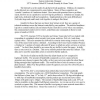124
Voted
GLOBECOM
2008
IEEE
15 years 7 months ago
2008
IEEE
— Multi-user multiple-input multiple-output (MIMO) systems have been emerging and attracting considerable attention recently for its potential to substantially improve system cap...
127
Voted
GLOBECOM
2008
IEEE
15 years 7 months ago
2008
IEEE
—In a distributed wireless network, it is possible to employ several relays and mimic a multiple antenna transmission system. In this paper we propose a MAC layer solution that a...
136
Voted
GLOBECOM
2008
IEEE
15 years 7 months ago
2008
IEEE
—We consider the problem of joint routing, scheduling and power control in multi-hop wireless networks. We use a linear relation between link capacity and signal to interference ...
111
Voted
GLOBECOM
2008
IEEE
15 years 7 months ago
2008
IEEE
— This paper investigates the problem of the formation of an uplink tree structure among the IEEE 802.16j network’s relay stations (RSs) and their serving base station (MR-BS)....
GLOBECOM
2008
IEEE
15 years 7 months ago
2008
IEEE
GLOBECOM
2008
IEEE
15 years 7 months ago
2008
IEEE
Abstract—This paper proposes a simple non-coherent amplifyand-forward receiver for the relay channel and evaluates its diversity performance for Rayleigh fading channels. We use ...
GLOBECOM
2008
IEEE
15 years 7 months ago
2008
IEEE
—This paper provides a queueing analysis for the slotted Aloha network. We assume the use of an exponential backoff protocol. Most prior work on slotted Aloha focuses on the anal...
GLOBECOM
2008
IEEE
15 years 7 months ago
2008
IEEE
— This paper considers the scheduling problem in wireless networks. We focus on prioritized maximal scheduling, where a maximal scheduler chooses the links in an order specified...
113
Voted
GLOBECOM
2008
IEEE
15 years 7 months ago
2008
IEEE
—In this paper, with the cross-layer design principle, a novel cooperative triple busy tone multiple access (CTBTMA) scheme is proposed for wireless networks to achieve cooperati...
99
Voted
GLOBECOM
2008
IEEE
15 years 7 months ago
2008
IEEE
—We propose a non-coherent receiver for the fixed detect-and-forward relay channel and derive a closed-form tight upper bound on its bit error probability in Rayleigh fading cha...


